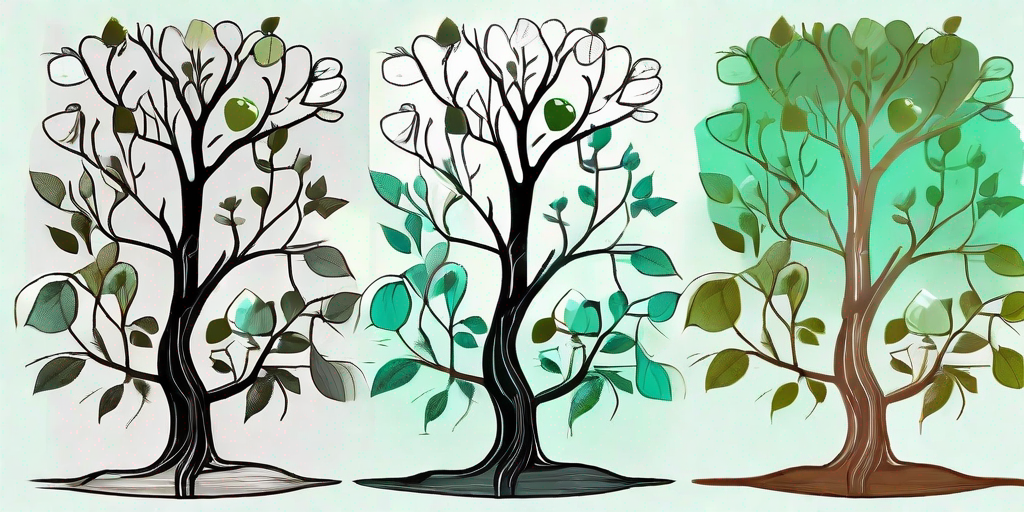
There's something truly magical about the life cycle of a pear tree. From the first blush of blossom to the juicy bounty of fruit, these trees are a testament to the wonders of nature. But have you ever stopped to consider the journey that a pear tree goes through in its lifetime? Buckle up, because we're about to embark on a whimsical, and slightly cheeky, exploration of the life of a pear tree.
The Early Days: From Seed to Sapling
The Humble Beginnings
Like all great stories, the life of a pear tree begins with a tiny seed. This seed, often discarded without a second thought after enjoying a juicy pear, is the start of a remarkable journey. It's hard to believe that such a small, unassuming object can grow into a towering tree, but nature is full of surprises.
After being planted in the ground, the seed begins to germinate. This process, which involves the seed absorbing water and nutrients from the soil, kickstarts the growth of the tree. It's a slow process, but as the saying goes, 'Rome wasn't built in a day', and neither is a pear tree.
The Growth of a Sapling
Once the seed has germinated, it begins to grow into a sapling. This is a crucial stage in the life of a pear tree, as it's during this time that the tree begins to establish its root system. These roots will not only anchor the tree in the ground but also absorb the nutrients that the tree needs to grow.
As the sapling grows, it begins to sprout leaves and branches. These leaves play a vital role in photosynthesis, the process by which the tree converts sunlight into energy. It's a bit like the tree's own personal solar panel system, except it's green and doesn't require any complicated wiring.
The Blossoming Stage
The Arrival of Blossoms
After the sapling has established itself, the next stage in the life of a pear tree is the blossoming stage. This is when the tree produces beautiful white flowers, which not only add a touch of elegance to any garden but also play a crucial role in the production of fruit.
These blossoms are the tree's way of attracting pollinators, such as bees and butterflies. These little critters are essential for the fertilization process, as they transfer pollen from the male parts of the flower to the female parts. It's a bit like a botanical version of a dating app, but with less awkward small talk and more buzzing.
The Pollination Process
Once the blossoms have been pollinated, the tree can begin to produce fruit. This process involves the ovary of the flower developing into a pear. It's a fascinating process, and one that highlights the intricate and delicate balance of nature.
During this time, the tree continues to grow and develop, reaching its full height and producing more and more fruit each year. It's a bit like the tree version of a teenager going through a growth spurt, except with less mood swings and more pears.
The Bounty: Harvesting the Fruit
When to Harvest
After months of growth and development, the time finally comes to harvest the fruit. But how do you know when the pears are ready to be picked? Well, there are a few signs to look out for. For one, the color of the fruit will change from a dark green to a lighter, yellowish-green. The fruit will also begin to soften and will come away from the tree easily when lifted and twisted.
It's important to remember that pears should be picked when they're mature but not fully ripe. This is because pears ripen from the inside out, and if left to ripen on the tree, they can become mealy and overripe. It's a bit like waiting for the perfect moment to eat an avocado, except with less frustration and more juicy goodness.
Storing and Enjoying the Fruit
Once the pears have been harvested, they should be stored at room temperature to ripen. This can take anywhere from a few days to a week, depending on the variety of pear. Once ripe, the pears can be enjoyed fresh or used in a variety of delicious recipes.
From sweet desserts like pear tarts and crumbles to savory dishes like pear and blue cheese salad, the possibilities are endless. It's a bit like having your own personal fruit buffet, except it's all pears, all the time.
Frequently Asked Questions
- How long does it take for a pear tree to bear fruit?
It typically takes a pear tree between 4 to 6 years to start bearing fruit. However, this can vary depending on the variety of the tree and the conditions in which it's grown.
- How often should I water my pear tree?
Pear trees should be watered regularly, especially during dry periods. However, it's important not to overwater, as this can lead to root rot and other problems.
- Do pear trees need a lot of sunlight?
Yes, pear trees need plenty of sunlight to grow and produce fruit. They should be planted in a location that receives at least six hours of direct sunlight each day.
And there you have it, a whimsical journey through the life of a pear tree. From the humble beginnings of a tiny seed to the juicy bounty of fruit, it's a journey that's full of surprises and delights. So next time you bite into a juicy pear, take a moment to appreciate the remarkable journey that it's been on. It's a bit like appreciating a fine wine, except with less pretentious swirling and more juicy pear goodness.











